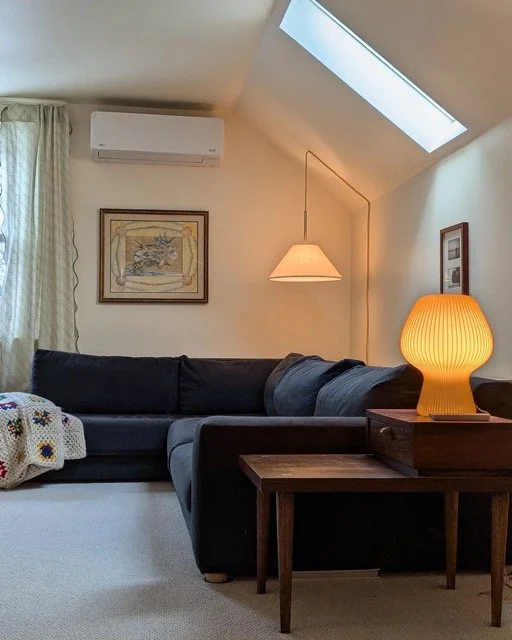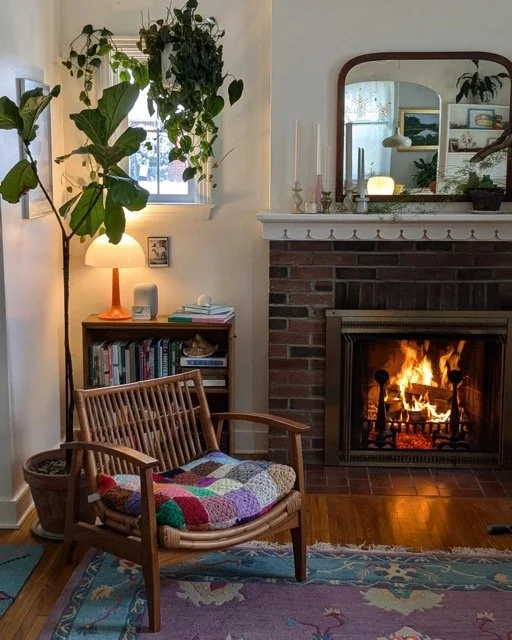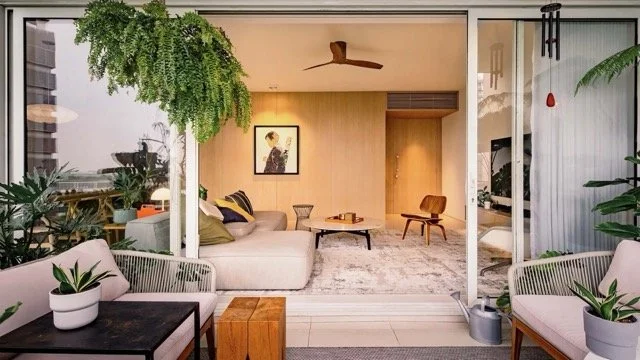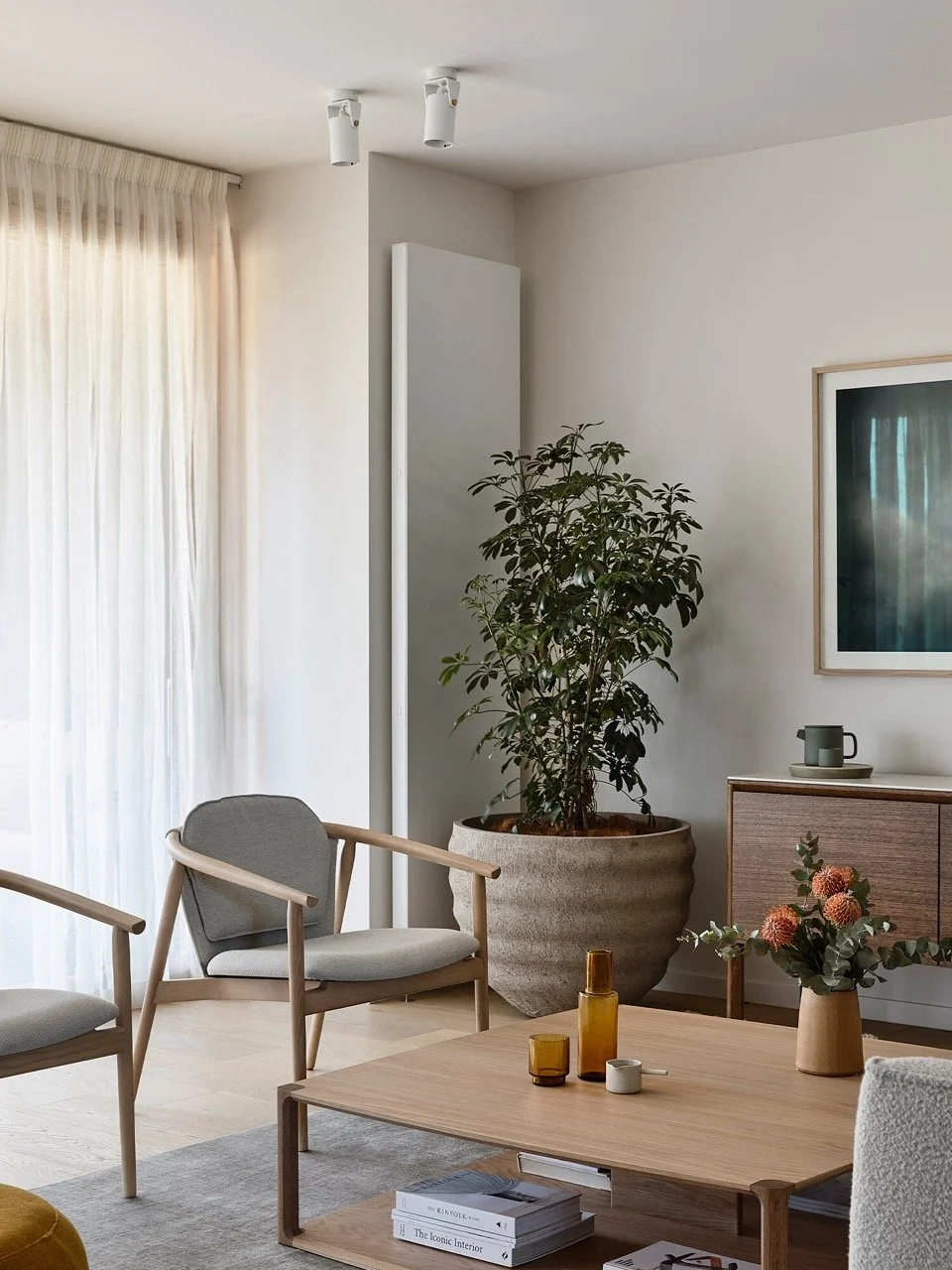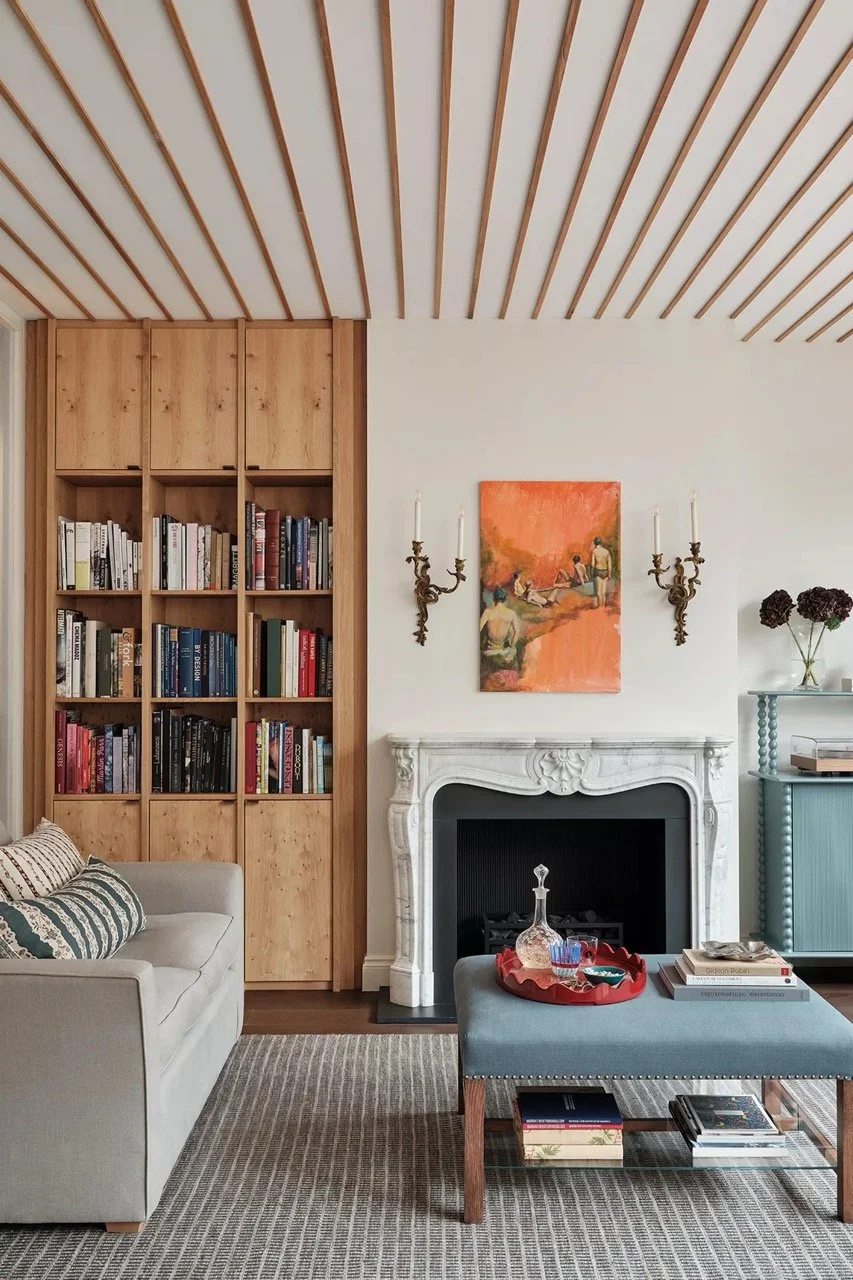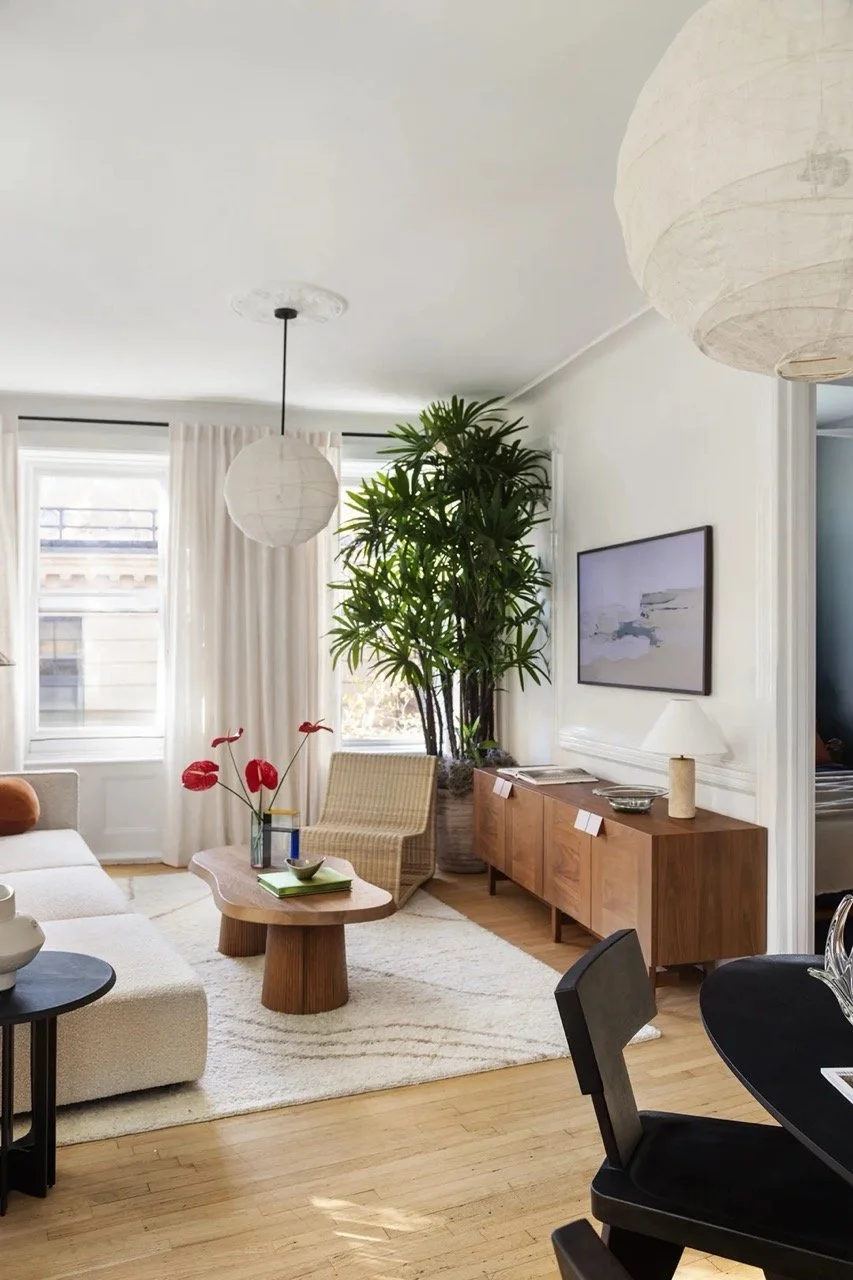I thought Luxury = Expensive. Then I saw this home.
I used to think a high-end home meant spending a fortune.
I’d flip through design magazines and scroll the internet, and was convinced that luxury was all about expensive furniture.
Then one time, I visited a friend’s newly renovated place.
Everything was expensive. Designer logos everywhere. Custom everything.
But it felt… chaotic.
Designer labels fighting for attention in a McMansion with no soul.
That’s when it clicked: elevated design isn’t about how much you spend.
It’s about how you put things together.
1. Layered Lighting = Instant Luxury
Great lighting can make even the simplest space feel expensive. And no, we’re not talking about a single overhead light.
High-end interiors use layers:
Ambient lighting (your soft, diffused light)
Task lighting (for function, e.g. reading lamps or under-cabinet lighting)
Accent lighting (to highlight architectural details or art)
Look for light fixtures that can double as an ‘art’ piece, like the lamp on this side table (left), & Something as simple as putting a lamp on a small bookshelf in a corner can work wonders! (right)
I love how they used spotlights above the artwork in this space!
👉 It’s simple:
Swap out builder basic fixtures for statement pendants.
Add a dimmer switch.
Bring in a few table & floor lamps.
Your home will instantly feel more refined.
2. Texture & Contrast Make a Room Look Expensive
A space that feels flat = cheap.
A space that plays with textures = luxury.
Mixing materials adds richness and depth.
Notice the soft textures of the sheer curtains and how they contrast with the sleek wooden coffee table (left), & The textures in the wooden headboard, and how the vertical lines are repeated in the pillow fabrics (right)
Try pairing:
A sleek leather chair with a soft woven throw
Matte walls with glossy decor accents
Linen curtains near a metal lamp base
👉 High-end spaces feel tactile. They make you want to reach out and touch everything.
3. Decluttering = More Elegance
Ever noticed how expensive-looking interiors aren’t crammed with stuff?
As the saying goes, “less is more.”
Luxury is about choosing the right things. Thoughtfully placed decor. Negative space that lets everything breathe.
👉 Decluttering doesn’t have to mean absolute minimalism like the space on the left. You can also have a curated yet maximalist space (like the one on the right) that feels luxurious!
What you need to do:
Edit your decor. If it doesn’t serve a purpose or bring joy, let it go.
Avoid tiny, scattered decorations. Instead, opt for larger statement pieces.
Keep surfaces clean. A clutter-free room automatically looks high-end.
4. Mix High & Low End (Yes, You Can Do That)
Another common mistake? Choosing everything from the same catalog.
Don’t make everything match perfectly! Real luxury is curated.
Some of the most stunning homes mix vintage finds with modern pieces, or thrifted gems with investment pieces.
The old-style fireplace and candlestick decor contrast nicely with the modern couch and bookshelf.
👉 Try this: Pair an antique wooden dresser with a sleek contemporary mirror. Combine a designer lamp with a secondhand table. Mix heirloom pieces with affordable decor.
5. Scale & Proportion Is Everything
Ever walked into a high-end home where the scales and proportions were off? Didn’t think so.
Here are the mistakes I see come up time and time again:
A rug that’s too small. Always go bigger.
Curtains hung too low. Move the rod up to make the ceiling feel higher.
Furniture crammed against the walls. Float pieces (if possible) to create breathing space.
👇 Learn more about high-end design in this video!
A high-end home isn’t about designer labels or unlimited funds.
It’s about good design choices.
Focus on lighting, texture, editing, contrast, and scale. In no time, you’ll find yourself living in a space that looks effortlessly luxurious, no matter your budget.
